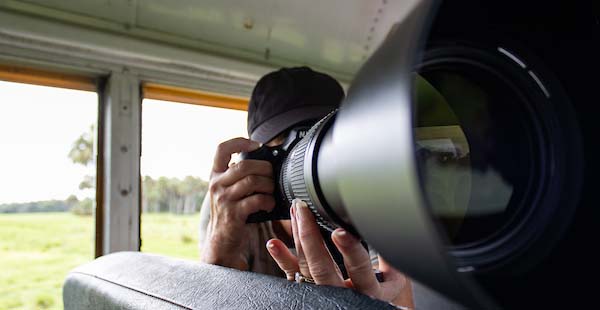Abstract
Social media is an important piece of Extension outreach efforts. Across many different platforms, photos or graphics accompanying social media posts have repeatedly yielded greater results, in terms of engagement and success. Thus, it is imperative to include a visual element with each post, and a social media post without one would be considered a missed opportunity. This article explores the question of whether stock images are as effective as natural images. Facebook posts from the Center for Rural Enterprise Engagement (CREE) team were analyzed to determine differences in engagement rates for stock images and natural images taken by the CREE team. Results indicate natural photos had significantly higher engagement rates than stock photos. Thus, it is recommended that content creators strive to create and use their own photos for posts. However, because the difference between mean engagement rates for stock and natural photos was low, in times of need, a stock photo can produce better engagement than no photo at all.
References
Aakhus, M., Agerfalk, P. J., Lyytinen, K., & Te’eni, D. (2014). Symbolic action research in information systems: Introduction to the special issue. MIS Quarterly, 38(4), 1187–1200. https://doi.org/10.25300/MISQ/2014/38:4.3
Attié, I. (2019). The stock photo market: What, who, how and where of stock photos in 2020. Stock Photo Secrets. https://www.stockphotosecrets.com/stock-agency-insights/stock-photo-market.html
Baker, L. M., Warwick, C. R., Fernandez, J. C., & Rumble, J. (2021). Getting the most out of social media: Successfully using social media: WC222/AEC560, 7/2021. EDIS 2021(4). https://doi.org/10.32473/edis-wc222-2021
Blumer, H. (1969). Symbolic interactionism: Perspectives and method. Prentice-Hall.
Breck. (2018, January 31). How stock images can help— or hurt— your brand. https://breckinc.com/2018/01/31/how-stock-images-can-help-or-hurt-your-brand/
Cohen, J. (1988). Statistical power analysis for the behavioral sciences (2nd ed.). Hillsdale, NJ: Lawrence Erlbaum Associates, Publishers.
Doyle, M., & Briggeman, B. C. (2014). To like or not to like: Social media as a marketing tool. The Journal of Extension, 52(3), Article 3IAW1. https://archives.joe.org/joe/2014june/iw1.php
Doyle, O., Baker, L. M., Zagonel, A., & Telg, R. W. (2023). Marvelous metrics: A quantitative content analysis to establish social media benchmarks for Florida fruit and vegetable farms on Facebook. Advancements in Agricultural Development, 4(2), 103–115. https://doi.org/10.37433/aad.v4i2.295
Gallo, A. (2017, June 28). A refresher on A/B testing. Harvard Business Review. https://hbr.org/2017/06/a-refresher-on-ab-testing
Garcia, A. S., Dev, D., McGinnis, C. M., & Thomas, T. (2018). Impact of an Extension social media tool kit on audience engagement. The Journal of Extension, 56(2). https://doi.org/10.34068/joe.56.02.14
Gharis, L. W., Bardon, R. E., Evans, J. L., Hubbard, W. G., & Taylor, E. (2014). Expanding the reach of Extension through social media. The Journal of Extension, 52(3), Article 3FEA3. https://archives.joe.org/joe/2014june/a3.php
Harvey, G. (2016). How using images greatly improves your Twitter engagement. Rethink Media. Retrieved from https://rethinkmedia.org/blog/how-using-images-greatly-improves-your-twitter-engagement
Li, Y., & Xie, Y. (2020). Is a picture worth a thousand words? An empirical study of image content and social media engagement. Journal of Marketing Research, 57(1), 1–19. https://doi.org/10.1177/0022243719881113
Lim, H., & Childs, M. (2020). Visual storytelling on Instagram: Branded photo narrative and the role of telepresence. Journal of Research in Interactive Marketing, 14(1), 33–50. https://doi.org/10.1108/JRIM-09-2018-0115
Mead, G. H. (1934). Mind, self and society: From the standpoint of a social behaviorist. Chicago: The University of Chicago Press.
Moran, G., Muzelec, L., & Johnson, D. (2019). Message content features and social media engagement: Evidence from the media industry. Journal of Product & Brand Management, 29(5), 533–545. https://www.doi.org/10.1108/JPBM-09-2018-2014
O'Neill, B. (2019). Ten tools for creating attention-getting social media messages. Journal of Extension, 57(2). https://doi.org/10.34068/joe.57.02.02
Stryker, S., & Statham, A. (1985). Symbolic interactionism and role theory. In Lindzey, G. and Aronson, E. (Ed.), 3rd ed., Handbook of Social Psychology, (pp. 311–78). New York: Random House.
Thomson, T. J., & Greenwood, K. (2017). I “like” that: Exploring the characteristics that promote social media engagement with news photographs. Visual Communication Quarterly, 24(4), 203–218. https://doi.org/10.1080/15551393.2017.1388701
Trevino, L. K., Lengel, R. H., & Daft, R. L. (1987). Media symbolism, media richness, and media choice in organizations: A symbolic interactionist perspective. Communication Research, 14(5), 553–574. https://doi.org/10.1177/009365087014005006
Warwick, C. R., Baker, L. M., Fernandez, J. C., & Rumble, J. (2021). Getting the most out of social media: Strategic practices when using social media: WC223/AEC561, 7/2021. EDIS 2021(4). https://doi.org/10.32473/edis-wc223-2021
Zontone, P., Boato, G., De Natale, F. G. B., De Rosa, A., Barni, M., Piva, A., Hare, J., Dupplaw, D., & Lewis, P. (2009, October 26). Image diversity analysis: Context, opinion, and bias [Paper presentation]. The First International Workshop on Living Web: Making Web Diversity a True Asset, Collocated with the 8th International Semantic Conference, Washington DC., United States. https://eprints.soton.ac.uk/268168/

